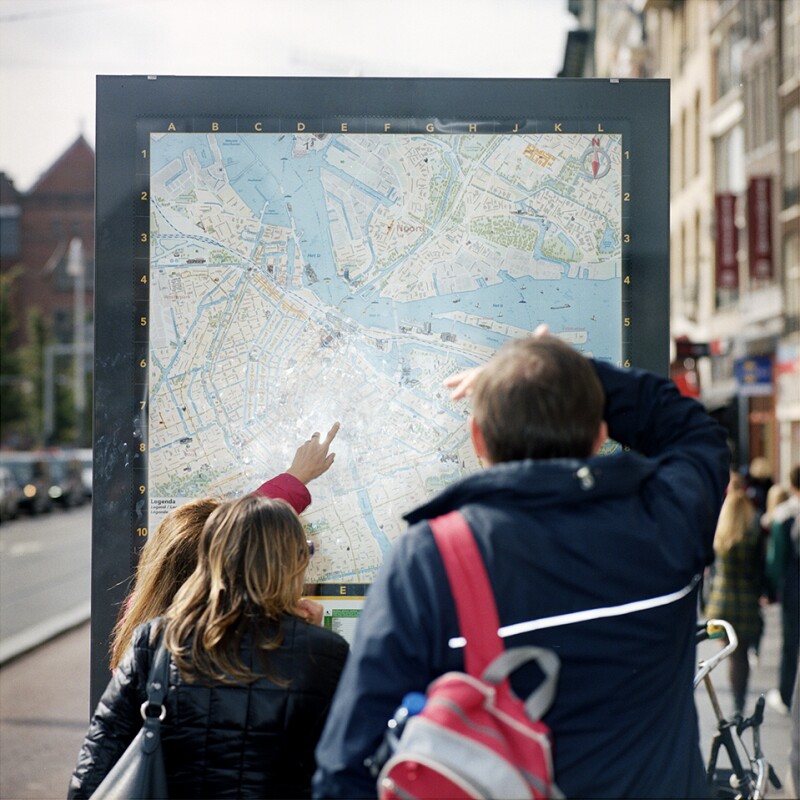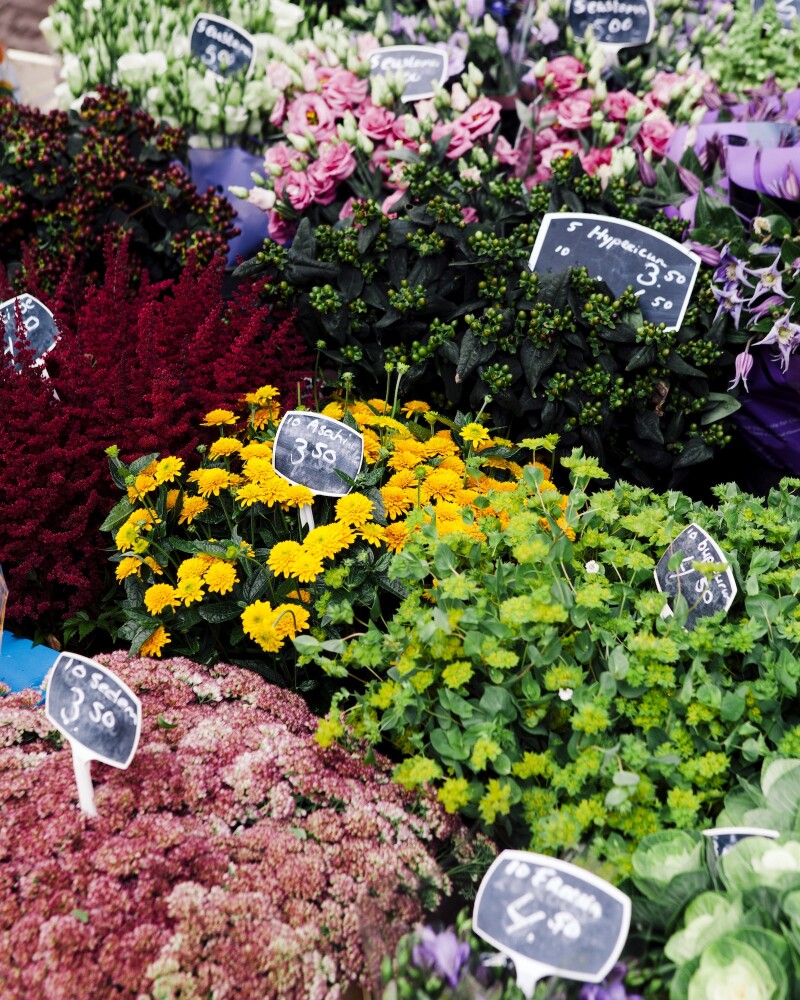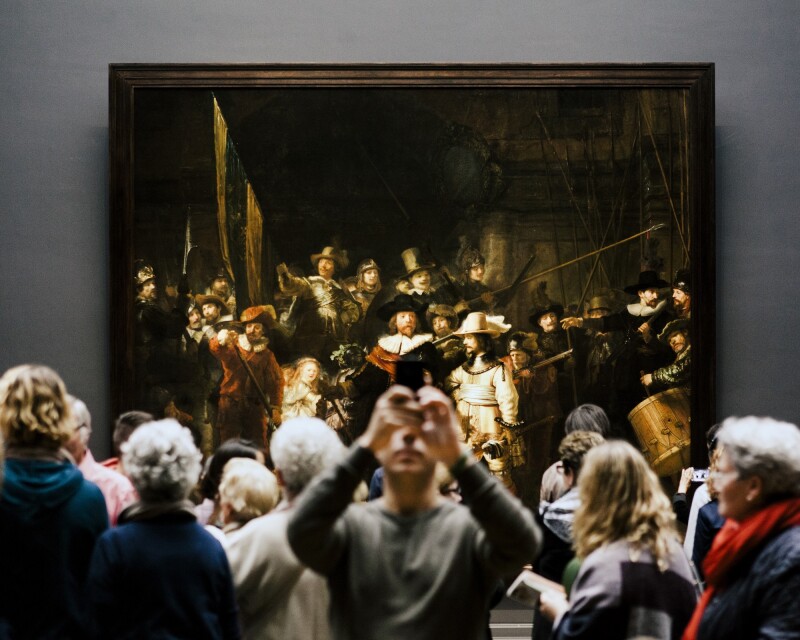I have never spoken to anyone who doesn’t love Amsterdam. A first visit there is like all the lights coming on at once, a step into a world where no one ever says no, in the city the musician Stew so beautifully called “a shopping mall of vice.” For many people, that visit to Amsterdam is the first hint that the world does not have to be like it is back home.
But on my own first trip, I hated Amsterdam. From the instant I stepped off the train.
Maybe I was tired. I’d just spent two years in Asia, capped off by a month in China and a week by train across Russia.
Maybe I was stupid. “This is what happens if you turn a city over to semi-talented art students,” I wrote in my journal.
Or maybe it’s as simple as what Hemingway said: “Some places were not so good, but maybe we were not so good when we were in them.”
What say the city and I give each other another chance?
To be fair, 1988 Amsterdam did smack me with this: the shock of leaping out of bed and yelling at the guy breaking into my room in the middle of the night; the disbelieving look on the faces of an elderly couple who were robbed in the crowd in front of the train station; waffles stuffed with herring, their tiny eyes peering out.
But I also have to own the fact that I was not so good myself in 1988 Amsterdam. Fights with waiters. Irrational fury at a record store clerk who had run out of the Joe Jackson CD that had been playing in my head clear across Russia. An odd fear of blonde women tall enough to look me in the eye. Having to count every guilder as the bank account coughed out its final zero. I don’t know who I was when I was there, but I really hope I wasn’t me, because I wasn’t one bit good.
All that was half a lifetime ago, though. I’d like to forgive my own past. What say the city and I give each other another chance?

Amsterdam is best-known for its elaborate canal system and cannabis-friendly coffee shops, among other things.
Photo by Ériver Hijano
According to the radio, Hell’s Angels are gathering on the edge of the city, circling the horizon in a rumble of thunder. Everybody’s OK with them, though, maybe because they live a daily life of more immediate threats: Residents of the center of Amsterdam are ever ready to leap aside as very pretty girls on bicycles rip by with all the concern a migrating herd of wildebeests would show for pedestrians.
But just before a blonde riding a tall bicycle and wearing an expensive scarf and absolute confidence in her right of way takes me straight back to 1988, the city offers up a gift. In front of the Apple store, a woman is walking a small and most handsome pig, heading toward the flower market for a morning sniff.
I think Amsterdam and I are going to get along fine this time.
Take the spaceship from 2001: A Space Odyssey, supersize it, crash-land it in a bog, and you’ve got the spoked form of the old city, canals in concentric circles reflecting postcard photographers’ secret dreams.
Amsterdam’s history begins in this bog. It edged the very rich sea, and thanks to a new kind of ship, one that went farther and allowed the processing of herring onboard, by 1600 trade was booming, money pouring in faster than the windmills could pump bog water out, and the city grew fat and happy. And what did these people do with all their money? Well, first they bought the kind of ruffled collar that today you can find only in your better clown supply stores. Then these burghers put their peasants to work driving pilings 12 meters into the mud, hundreds of thousands of pilings, pounded with a driver that required 40 men to operate. Do this long enough and you get a city walking on stilts, you get Amsterdam looking like the world’s most perfect sand castle. You get gently curved canals, you get houses that are the epitome of middle-class real estate lust.

Tall, narrow houses—most built during the Netherlands’ 17th-century Golden Age—line Amsterdam’s canals.
Photo by Ériver Hijano
And I want one. Oh, yes, despite a lifelong promise to myself that I would never share walls, I want one. Every canal is lined with five-and six-story houses, shoulder to shoulder, all with a family resemblance but none the same as another. On narrow, serifed facades—one house, the beautifully named House of Mr. Trip’s Coachman, is all of eight feet wide—gables loom, rose-pink bricks live happily next to off-white. Side by side like a very old married couple, a flat-faced house snuggles up next to one scalloped with decorative shadows.
Most visitors only ever go inside one particular high-period Amsterdam house. They see only one version of how this narrow life is lived, and they climb the secret staircase behind the bookshelves. But a visit to the Anne Frank House would break my very strict no-Nazis-when-I-travel rule.
So instead, I go to the man who invented how Amsterdammers see their sky. How the Western world sees the sky.
You don’t have to see what you thought you wanted to see . . . in the end, your expectations don’t matter at all.
Rembrandt Harmenszoon van Rijn’s house, the place where possibly the greatest artist the world has ever known took off his clown collar and put his feet up, doesn’t face the water. Although you’d have to ransom a small country to buy a Rembrandt painting now (in fact, even the Rembrandt House Museum can’t afford a single Rembrandt painting, only etchings), during his life, he was too broke to afford a canal view in a city designed to give almost everyone a canal view.
Since he couldn’t spend his days looking at the city’s mercury-silver water, Rembrandt must have spent hours looking at the sky, unlocking the secrets of the North Sea’s chiaroscuro light, turning the fish-belly sky into a lambent sheen. Never direct, the light slides in, traveling a maze of cloud layers. To me in 1988 Amsterdam, that light made the city look like a dog about to be punished with a bath. But today in Amsterdam, I see it shimmering on canals and reflecting into the houses as though the windows were giant kaleidoscopes.
After strolling though the house-turned-museum, I step outside and get in line at a waffle stand (herring are next door if you want to combine them yourself, but I don’t), utterly content to be here under this sky. The score: 1988 Amsterdam, 0; Amsterdam today, 1.
Even fancy collars and flawless architecture weren’t enough to soak up all the city’s new riches, so with money burning a hole in their purses in the early 1600s, the Dutch went Beanie Babies bonkers over what that sky, the rain, and the boggy soil did best—turn the earth into a carpet of tulips. Tulpenmanie, they called it, “tulip madness.” A single rare bulb traded for as much as 12 acres of land; a run-of-the-mill bulb could go for enough to buy a couple dozen sheep. The most valuable of all were actually infected with a virus that burned flame colors onto the bloom. But as dumpsters full of Beanie Babies can tell you, after the boom comes the inevitable crash. By the end of the 1630s, a bulb meant nothing more than maybe a tchotchke and some bankruptcy papers.

Spring is the most popular time of year to visit Amsterdam. Bulb fields with tulips and other flowers bloom from mid-April through mid-May just outside the city.
Photo by Ériver Hijano
Get to Amsterdam in the spring, as I did in 1988, the sun straight overhead like a spotlight, and the town is surrounded by squares and trapezoids of solid colors and some multi-colors. I glanced at them out the train window when I finally left town, then went back to reading my book, a sin of omission I ended up atoning for much later by moving to Washington State’s tulip district.
But in winter Amsterdam, it’s like the rheostat has been cranked down. Brightness is a memory; the flower market has only greenhouse blooms and baskets of bulbs waiting out winter’s slanting light. It’s anticipatory, the bulbs a color waiting to appear and transform the reflections on the undersides of clouds.
But even in winter, the city does offer some flowers that never fail to show the limits of any high-def computer screen. In the Stedelijk Museum, I come to a room of paintings by Piet Mondrian, who studied art here in the early 1900s. I’ve loved his simple abstract geometry of primary tints in squares and rectangles my entire life, but now I realize his paintings were entirely representational, blocks of color that could pass for the right-angled fields of blooming tulips—“an absolute of perfect sensations,” as the artist Barnett Newman wrote.
And then there are the things left by the only other person I’ve found who reacted to the city in 1877 the way I reacted 111 years later. In 1988 Amsterdam, I didn’t go to the Van Gogh Museum because I couldn’t afford a ticket. I can now. Good travel can’t be as simple as having enough money to throw at problems. I’d rather think that back then I let expectations determine how I saw things. I thought I already knew I hated Van Gogh, the way I didn’t have to taste herring waffles to know I didn’t want to taste herring waffles. It was just another generous offering the city held out that I slapped away like a spoiled child.
But that was then. Today I would skip two days of meals to pay for the briefest glimpse inside the Van Gogh museum.

Two women pose for a selfie with the city of Amsterdam as their backdrop.
Photo by Ériver Hijano
Vincent Van Gogh came to Amsterdam nearly as broke as I was that first time around. He had not yet begun his work as a painter—he was training as a clergyman—but instead of spending his time with God the way he was supposed to, he spent his year in Amsterdam thinking about art. “Everything reminds one of Rembrandt’s etchings,” he wrote his brother, going on about his need for “nothing less than the infinite and the miraculous.”
Van Gogh stared at flowers lit by 1877 Amsterdam’s roiled sky, and I find myself in the heart of the Van Gogh Museum staring at the permanent springtime of his sunflowers, their yellow the shade of a dinosaur model I had when I was a kid. But what stops me cold is the iris, a flower I know well from where I grew up in Alaska, dark blues and purples like a sneak preview for the hour right after sunset.
Even while learning the landscape of flowers, Van Gogh wrote to his brother that his year here was “the worst time of my life.” And 1988 me would have understood. I think I wanted the Europe of Fred Astaire movies, old-world elegance. And mostly what I saw were glassy-eyed college kids walking through the town’s air of petty menace and oily canals. I blamed the city for not being what I wanted it to be. Though there’s no cure for stupid, sometimes you can age out of it, and an hour of iris gives me hope that I have.
After leaving the Van Gogh Museum, cobblestones doing unkind things to my sprained ankle, I watch buskers in front of Oude Kerk. I find space between chained bikes waiting for their blonde Amazons to pedal away, and lean against canal rails. And I’m good. Happy, as the city goes by and the coming evening’s cold starts to get to the small of my back, where I’m leaning against the railing.

One of the most popular ways to explore Amsterdam is by touring its ring of 165 canals.
Photo by Ériver Hijano
Then, as beautiful as a pig on a morning walk, the street begins to twirl with Hare Krishnas dancing and singing through a crowd that had, a moment ago, been thinking only of Benetton or Kiehl’s or Prada, what the 21st century has replaced dreams of tulips with, the modern world filling windows of 17th-century buildings that seem slightly offended. The Krishnas clash their tambourines and chant for the beauty of creation. I’d fall in and dance with them, but the end of the conga line is by a french fry stand, the hour grows late, and I grow hungry—and not for enlightenment.
I have no pictures from 1988 Amsterdam because I left them behind in the divorce. I have no pictures of 2014 Amsterdam because I forgot a camera and I refuse to carry a phone. How can you reinvent yourself, how can you be better than who you were, if you’re always tied to everybody who already knows you? Besides, I don’t need a camera. Years of travel have taught me how I remember things. I know I’ll remember the taste of the fries, the sky’s arcs of light, clouds glowing as though they were hiding a parking lot of UFOs. I know I’ll remember the street with two smoke shops—Super Skunk and Easy Time—flanking a restaurant called Everything on a Stick.
At a flea market, I buy a stack of old postcards, other people’s letters home, the things they wanted to remember. And then it’s time to go see if the thing I remember most has been remembered right at all.

Onlookers gather in front of Rembrandt’s “The Night Watch” in Amsterdam’s Rijksmuseum.
Photo by Ériver Hijano
The Rijksmuseum, near the Van Gogh, in a building that looks as if it was raised to house a cavalry regiment of stair-climbing horses, is one of the greatest art museums in the world. You can tell by the number of people standing in front of Rembrandt’s grand painting The Night Watch, the utter perfection of his side light ruined by a crowd blocking the view. Maybe I’m the only one who cares, because nobody else is looking at the painting at all; they’re looking at their phones and taking pictures of themselves blocking the view of the painting, pictures that, for their sake, I hope they’ll live long enough to regret. Like me and my long list of 1988 crimes, something they’ll have a chance to repent.
But let’s face it, 1600s Amsterdam had its own version of a selfie. As soon as you had your narrow house and your wide collars and your tulip patch, you hired someone to paint you—fat, smiling, smug, and without the judgment of time that would tell you that you just got painted by one of the best artists in the world. Upper crust Amsterdam was papered wall-to-wall with these portraits. And I remember this, more than anything else, about Amsterdam in 1988: the endless gallery, a Möbius hell with no clear means of escape in the Rijksmuseum, walls of nothing but one round and rosy face after another, eyes following, ruffled collars making the burghers look like a cannibal’s lamb chops. Hundreds. If not thousands. And I couldn’t find a way out, and I was minutes from a full wobbly fit of claustrophobia, and there were more and more of the paintings and suddenly—wait. Those are Brueghel colors.
I was well enough educated in 1988 to recognize a Brueghel painting from 50 yards. I was not well enough educated to know there had been a whole family of Brueghels in the 16th and 17th centuries, fathers and sons, all, apparently, smoking the same stuff. From 10 yards out, the painting is a bucolic landscape, a picnic on a riverbank. But come closer and you notice two of the people are actually frogs. Fully dressed and cursed by a goddess for not letting her drink from the stream.

Amsterdam has more bridges than can be found in the famous canal city of Venice.
Photo by Ériver Hijano
In 2014, I re-walk the galleries in search of those frogs. I see Vermeer’s milkmaid and Steen’s baker, but no frogs. Apparently, sometime in the last 26 years, they hopped out of view, perhaps into storage. And what I know now that I never would have known in 1988 is that it’s OK. That you don’t have to see what you thought you wanted to see. That, in the end, your expectations don’t matter at all. Because sometimes the world throws suit-wearing frogs at you and sometimes it doesn’t, and it doesn’t really care what you want.
Back out on the street, I walk slowly and reflect on my two Amsterdams. Some places weren’t so good, or maybe we weren’t so good when we were in them.
But that’s why I travel, why I knew I had to come back. That’s what the miles have done for me. We don’t have to be good. We just have to be open. Show up and say “cool” at all the rewards revealed under strange skies.
>>Next: How to Make Sense of the Intense, Timeless, Thoroughly Modern Beauty of Bangkok











